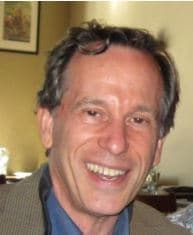Dr. Abrams continues his discussion on the disruptive forces facing the audiology and hearing aid industry

Harvey Abrams, PhD
In Part 1, I introduced the concept of the service component of industry disruption; that is, we need to think beyond the price and delivery model of the product if we hope to address the issues raised by the PCAST report and the proliferation of low cost personal amplifiers. I concluded Part 1 with an observation attributed to Don Berwick , that every system is perfectly designed for the results it gets and that up until now, there has been no reason (financially) to change the prevailing system of hearing aid sales and delivery.
If a practice can sell 15 hearing aids a month and everyone is making a high enough income to live comfortably, why change? Why see more patients? Why work harder?
Well, the times they are a changin’.
The cost of hearing aids is getting a lot of attention by the government, consumer groups, and the press. As far as those entities are concerned, there’s no distinction between the cost of the product and the cost of the services. That’s why the PCAST claims that the average cost of a hearing aid is $2,363 with premium models costing $2,898. By contrast, the PCAST reports that the cost of a hearing aid to the VA is about $400. We know that the retail cost is “bundled” and the reported cost to the VA is not.
I’ve already made the case (as have others) for unbundling (or itemizing) our care; we must do this and we must do more. In order to respond to lower cost amplification devices that will be hitting the market in increasing numbers, we need to reduce our costs through disruptive (for us) service delivery.
One example includes increased automation. There is convincing evidence that automated audiometry yields at least as good, and sometimes better, results than manual audiometry. As recently as last week, HHTM reported on an innovative approach to self-directed hearing testing (expect to see an increase in the development of similar tests in the near future).
Furthermore, we must increase the numbers and the scope of practice of support personnel so that the audiologist can practice at the highest level of his/her license (conducting air & bone conduction threshold measures and making minor adjustments to hearing aids does not represent the highest level of our license).
We must increase the use of tele-audiology so that we can serve more patients at times and locations that are convenient for them while reducing costs for the patient and provider.
A counter argument to the expanded use of automation and support personnel is that the audiologist must be the one to conduct all procedures to ensure optimum patient outcome. I would ask you to think about the last time you visited the dentist, family doctor, orthopedist, ophthalmologist, or pediatrician – exactly how much time did you spend with the physician compared to a nurse, technician, PA, hygienist, etc.?
Do you think your care was compromised because the physician didn’t spend the entire visit with you and perform every procedure?
What is so special about audiologic practice that we need to be the ones to sit in front of a machine and press buttons and turn dials to obtain a measure of auditory sensitivity? The last time I had an EKG, a technician attached electrodes to my chest and pressed the start button on the EKG machine. If the technician did not perform her job correctly and as a result the tracings failed to reveal a potential heart problem, the consequence could be death.
So what is so special about audiometry that we can’t automate it and simply have an audiology assistant hit the start button? Let’s at least start there.
Harvey Abrams, PhD, is an audiology consultant in the hearing aid industry. Dr. Abrams has served in various clinical, research, and administrative capacities in the industry, the Department of Veterans Affairs and the Department of Defense. Dr. Abrams received his master’s and doctoral degrees from the University of Florida. His research has focused on treatment efficacy and improved quality of life associated with audiologic intervention. He has authored and co-authored several recent papers and book chapters and frequently lectures on post-fitting audiologic rehabilitation, outcome measures, health-related quality of life, and evidence-based audiologic practice. Dr. Abrams can be reached at [email protected]






Although there is nothing wrong with automated screening the standard of care is, and should be, face to face delivery of hearing evaluation, hearing aid delivery and counseling. Conducting a hearing test reveals much about a patients demeanor and communication style that is useful in the consult and fitting. In addition more comprehensive protocols that include speech in noise testing require professional observation to extract useful clinical information. What adds value to the private practice delivery model is the professionalism of the process and without that hearing aids have very little monetary value indeed.
I think we are oversimplying our comparisons here. Hearing acuity and case history, including age, psychosocial and lifestyle dynamics are immensely more complex than dentistry, optometry, and other health considerations. Moreover the implications relative to rehabilitation and outcomes are far more reaching. The human aspect of evaluation and correction will only be automated at the expense of quality and efficacious care and counseling. Medicine does not work well with the one or two minute physician visit, hearing care even less so. For us to allow outside experts determine the value and cost aspects of hearing care will hurt consumers as much as it inhibits the ability of the industry to serve them. Having been in this field for nearly four decades we see the same level of ignorance in officialdom as we saw during the 1970s. The danger now is the demolition of one of the best hearing health delivery systems in the world. PCAST must be answered better and urgently so.